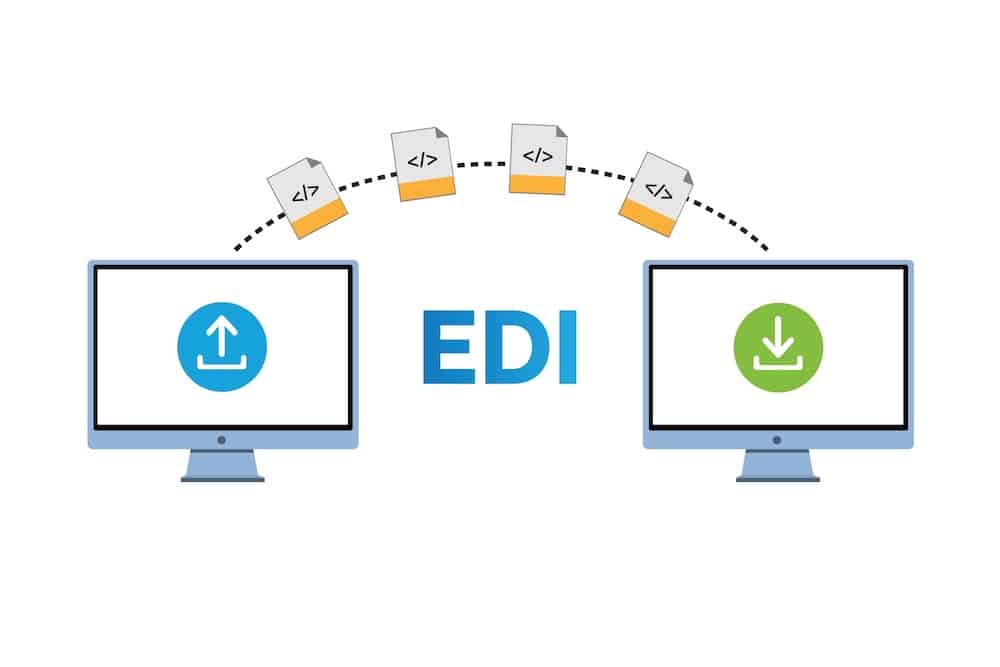How Food Distribution Professionals Can Leverage Cutting-edge Inventory Management Software
The food and beverage industry has unique challenges when it comes to the supply chain. With perishable products, stringent food safety requirements, and increasing consumer demands, food distributors need specialized solutions to manage their operations efficiently. This is where food inventory management software comes in, offering an array of features tailored to the needs of food industry professionals. In this blog post, we will explore the benefits and features of these software solutions, and how they can improve your supply chain management.
Understanding the Food and Beverage Industry Supply Chain
Unique Challenges in the Food Industry
The food and beverage industry presents unique challenges compared to other industries. For instance, food distributors have to deal with perishable products, stringent food safety regulations, and fluctuating demand. Moreover, they need to maintain quality control (QC) across every stage of the food manufacturing process, from raw materials to finished products.
The Role of Software in the Food Supply Chain
Software for food distributors and wholesale food distributors plays a crucial role in addressing these challenges. By automating and streamlining various processes, these solutions allow businesses to enhance efficiency, minimize errors, and ensure regulatory compliance. These software systems also enable food manufacturers and distributors to gain end-to-end traceability, a vital component for food safety and quality management. From food production to delivery, businesses can track the movement of their products in real-time and manage inventory more effectively.
Essential Features of Software for Food Distributors
Warehouse Management
A robust warehouse management system (WMS) is a core component of software for food distributors. These solutions help businesses manage their warehouse operations, including product storage, order picking, and shipping. A WMS can also facilitate lot tracking, and recalls, and ensure adherence to food safety regulations, such as the first-expired, first-out (FEFO) rule.
ERP Systems and ERP Software
Enterprise Resource Planning (ERP) systems have other key features for food distributors and manufacturers. ERP software integrates various business functions, such as order management, inventory management, and warehouse management, into a single, centralized system. This integration allows food and beverage businesses to optimize their operations and make informed decisions based on real-time data.
End-to-End Traceability
One of the most critical features of software for food distributors is end-to-end traceability. This capability allows businesses to track and trace raw materials, ingredients, and finished products throughout the entire supply chain. By maintaining complete visibility, food distributors can quickly identify and resolve potential issues, ensuring food safety and quality control.
Inventory Management
Effective inventory management is vital for food and beverage businesses to minimize waste and maintain freshness. Software for food distributors often includes advanced inventory control features, such as real-time tracking, forecasting, and automated replenishment. These capabilities enable businesses to optimize their inventory levels, reduce spoilage, and improve overall efficiency.
Order Management and E-commerce Integration

Software for food distributors should also include comprehensive order management features. These capabilities enable businesses to streamline order entry, processing, and fulfillment. Additionally, integration with eCommerce platforms allows food distributors to expand their market reach and efficiently manage online orders from customers.
Note that a warehouse management system such as ASCTrac® offers a complete array of features and functionality to help distribution companies work efficiently. This includes many of the above features as well as easy integration with your current software, such as an ERP solution.
Benefits of Implementing Inventory Management Software for Food Distributors
Improved Efficiency and Cost Savings
By streamlining and automating various processes, software for food distributors can significantly improve efficiency across the entire supply chain. This increased efficiency can lead to cost savings in areas such as labor, warehousing, and transportation.
Enhanced Food Safety and Quality Control
Inventory Management Software for food distributors helps businesses maintain strict QC and ensure compliance with food safety regulations. With complete traceability, businesses can quickly identify and address potential issues, protecting their brand reputation and ensuring customer satisfaction.
Better Decision-Making and Data-Driven Insights
The integration of various business functions within the software for food distributors enables companies to access real-time data and generate actionable insights. This data-driven approach allows food and beverage businesses to make informed decisions and optimize their operations, leading to improved profitability and growth.
Increased Flexibility and Scalability
Software for food distributors can be customized to meet the unique needs of individual businesses, providing flexibility to adapt to changing market conditions and consumer demands. Furthermore, these solutions are scalable, allowing businesses to grow and expand their operations without encountering limitations in their software systems.
Improved Customer Satisfaction
By enhancing efficiency and ensuring food safety and QC, software for food distributors ultimately leads to improved customer satisfaction. Businesses can efficiently fulfill orders, maintain inventory levels, and ensure that products meet the highest quality standards, resulting in happy and loyal customers.
Key Considerations for Selecting Software for Food Distributors
Integration with Existing Systems
When selecting inventory management software for your food distribution business, it’s essential to consider how well the solution can integrate with your existing systems, such as accounting, human resources, shipping software and eCommerce platforms. Seamless integration ensures that your data flows smoothly between systems and reduces the need for manual data entry, leading to improved efficiency and accuracy.
Customization and Configurability
Every food distribution business is unique, whether a small niche distributor or a large wholesale food distributor, your business has specific needs and requirements. Therefore, it’s crucial to choose software that is highly customizable and configurable to meet your organization’s specific needs. This flexibility will enable you to adapt the software to your business processes and make adjustments as your operations evolve.
Vendor Support and Training
Effective vendor support and training are crucial for successful software implementation. When evaluating software solutions, consider the level of support provided by the vendor, including ongoing technical assistance, software updates, and training resources. This will help ensure that your team can fully leverage the software’s capabilities and resolve any issues that may arise.
Security and Compliance Features
Given the sensitive nature of data in the food and beverage sector, it’s essential to select software that prioritizes security and compliance. The food inventory management software should have robust security measures in place to protect your data and help you comply with food safety regulations and industry standards, such as the Food Safety Modernization Act (FSMA) and Hazard Analysis and Critical Control Points (HACCP).
Total Cost of Ownership (TCO) and Return on Investment (ROI)
When evaluating food inventory management software solutions, it’s essential to consider the total cost of ownership, including software licensing, implementation, customization, training, and ongoing maintenance. Additionally, consider the potential return on investment the software can deliver by improving efficiency, reducing costs, and enhancing decision-making. This will help you make an informed decision that balances costs with the potential benefits to your business.

ASCTrac® Warehouse Management System for Food Distributors
ASCTrac® Warehouse Management System (WMS) is a powerful and flexible software solution designed specifically for food distributors. With its comprehensive suite of features tailored to the unique challenges of the food and beverage industry, ASCTrac® WMS helps businesses optimize their supply chain operations, ensuring food safety, quality control, and efficient inventory and warehouse management.
Key features of ASCTrac® WMS include:
- Seamless integration with ERP systems and eCommerce platforms.
- End-to-end traceability for enhanced food safety and quality control.
- Advanced tools for managing inventory, including real-time tracking, demand forecasting, and automated replenishment.
- Robust warehouse management capabilities, such as lot tracking and adherence to food safety regulations.
- Comprehensive order management and fulfillment features.
By implementing ASCTrac® WMS, food distributors can benefit from improved efficiency, reduced costs, better decision-making, increased customer satisfaction, and a strong competitive advantage in the market.
Best Practices for Implementing Software for Food Distributors
Defining Clear Goals and Objectives
Before implementing software for your food distribution business, it’s essential to define clear goals and objectives. This will help you align your software implementation with your overall business strategy and ensure that the solution delivers the desired results.
Building a Cross-Functional Implementation Team
Assemble a cross-functional team comprising members from various departments, such as operations, IT, and finance, to oversee the implementation process. This team should collaborate closely and communicate regularly to ensure a successful implementation and smooth transition to the new software.
Developing a Detailed Project Plan
Develop a detailed project plan that outlines the implementation timeline, milestones, responsibilities, and resources required. This plan will serve as a roadmap for the implementation process, helping you to stay on track and address any challenges that may arise.
Ensuring Proper Training and Change Management
Training your team on the new software is crucial for successful implementation. Provide comprehensive training resources and ongoing support to help your team adapt to the new system quickly. Additionally, implement change management strategies to address any resistance to change and ensure a smooth transition.
Regularly Evaluating and Updating the System
Once the software is implemented, regularly evaluate its performance and make updates as needed. This will help you to continuously improve your operations and adapt to changes in the food and beverage industry.
Conclusion
Selecting the right software for food distributors is a critical step in achieving success in the competitive food and beverage industry. By considering factors such as integration, customization, support, security, and cost, and following best practices for implementation, businesses can effectively leverage the power of solutions like ASCTrac® Warehouse Management System. This investment not only streamlines operations but also fosters growth and adaptability in the ever-changing market landscape. Ultimately, the right software solution empowers food distribution professionals to drive efficiency, maintain compliance, and deliver superior customer satisfaction, securing a strong competitive advantage.
Frequently Asked Questions (FAQs)
How do Software Solutions for Food Distributors Differ from Generic Supply Chain Software?
Software solutions for food distributors, such as industry-specific ERP solutions or a WMS, are specifically designed to address the unique challenges and requirements of the food and beverage industry, such as perishable products, stringent food safety regulations, and fluctuating demand. These solutions typically include features like start-to-end traceability, advanced inventory management, and compliance tools that are tailored to the needs of food distribution businesses.
What is the Typical Implementation Timeline for Food Distributor Software?
The implementation timeline for food distributor software can vary depending on the complexity of your operations, the level of customization required, and the readiness of your team. Generally, implementation can take anywhere from a few to several months. To ensure a successful implementation, it’s essential to develop a detailed project plan, allocate sufficient resources, and provide comprehensive training and support to your team.
How Can I Ensure a Smooth Transition When Implementing a New Software Solution?
To ensure a smooth transition when implementing a new software solution, follow best practices such as defining clear goals and objectives, building a cross-functional implementation team, developing a detailed project plan, providing comprehensive training and change management support, and regularly evaluating and updating the system. By taking a proactive and structured approach, you can minimize disruption to your operations and maximize the benefits of your new software solution.




